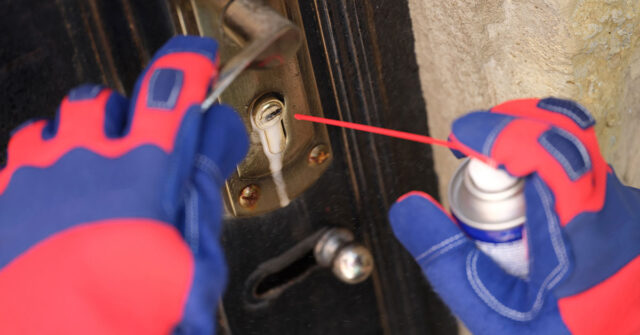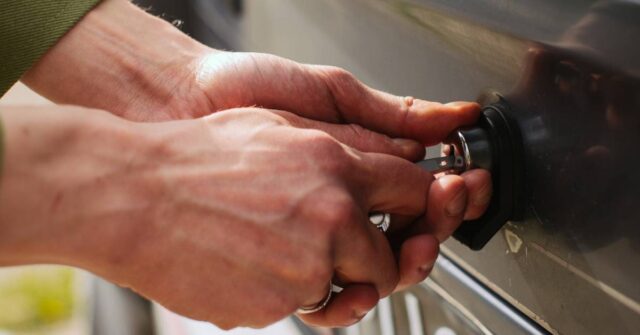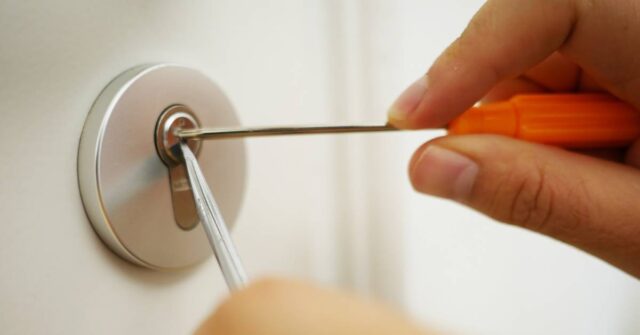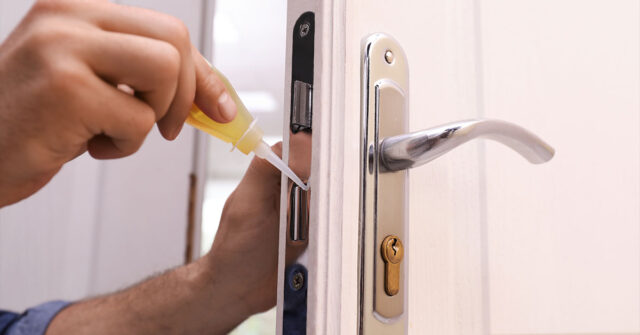Do you find your door lock difficult to operate, or does it seem to stick? Just like any other device with moving parts, your door locks require regular maintenance to work smoothly and efficiently.
In this comprehensive guide, we will take you through the process of properly lubricating your door locks, highlighting key tips, common mistakes to avoid, and how the Australian climate can affect your locks.
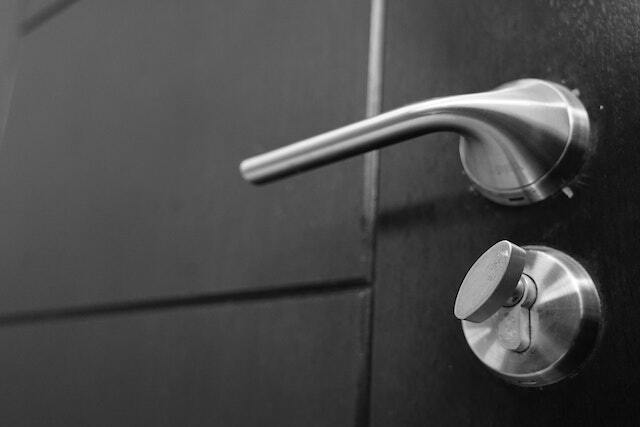
Understanding the Importance of Lubricating Your Door Locks
Maintaining your door locks might seem like a minor task, but its importance cannot be overstated.
Regular lubrication plays a significant role in the functionality and longevity of your door locks. It’s about more than just ease of use; it’s about security, comfort, and peace of mind.
Longevity and Performance of Door Locks
Without proper lubrication, door locks can become stiff and difficult to operate over time. This not only impacts your comfort but could compromise your security as well.
A well-lubricated lock is less likely to jam, break, or suffer damage, thereby extending its lifespan and maintaining its performance.
The Australian Climate and Your Locks
Australia’s unique climate conditions can also have an impact on your door locks.
Regions with high humidity, coastal areas with salt air, or locations with extreme temperatures can all contribute to the corrosion or wear of your locks.
Regular lubrication can help protect your locks from these harsh environmental factors.

Recognizing When Your Door Lock Needs Lubrication
Regular maintenance is key to keeping your door locks in top shape. However, it’s also important to recognize when they require immediate attention and lubrication.
The following section will help you identify these signs.
Signs of a Lock That Needs Lubrication
If your lock is becoming difficult to operate, it’s a clear indication that it needs lubrication. Other signs might include a squeaky sound when turning the key or the key sticking or getting stuck in the lock.
Preventive Maintenance
Rather than waiting for your lock to show signs of needing lubrication, adopting a preventive maintenance approach can save you a lot of trouble.
Regularly scheduled lubrication, irrespective of the signs, ensures that your lock is always in the best working condition.
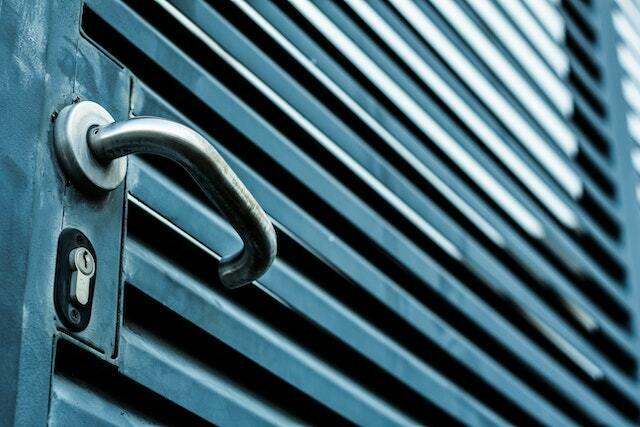
Different Types of Door Locks and Their Lubrication Needs
Door locks come in various types, each with its unique design and lubrication requirements. Understanding these can help you care for your lock more effectively.
Deadbolt Locks
Deadbolt locks are commonly used in exterior doors for their high security. Lubricating them requires a particular approach where the lubricant should be applied both to the key and directly into the lock cylinder.
Cylinder Locks
Cylinder locks, also known as pin tumbler locks, require lubrication of the plug (where the key goes in) and the cylinder (the outer casing containing the plug).
Mortise Locks
Mortise locks, commonly found on older doors, require lubrication of the bolt mechanism as well as the lock cylinder.
Smart Locks
Smart locks, despite their electronic nature, also contain mechanical components that may require lubrication. However, always refer to the manufacturer’s instructions before applying any lubricant.

Types of Lubricants Suitable for Door Locks
Choosing the right lubricant for your door lock is essential. Different locks may require different types of lubricants. In this section, we’ll examine the most commonly used ones and their benefits.
Graphite Lubricants
Graphite lubricants are often recommended for locks as they don’t gum up or attract dirt over time. They come in both dry powder form and in a liquid carrier that evaporates, leaving behind the graphite.
Silicone-Based Lubricants
Silicone-based lubricants are safe to use on most types of locks. They are excellent for reducing friction and typically don’t attract dust and dirt.
Oil-Based Lubricants
While oil-based lubricants are quite effective, they are less commonly used for locks because they can attract dust, leading to gumming up over time.
WD-40
Although not a lubricant in the traditional sense, WD-40 can be used to clean and displace moisture in locks.
However, much like oil-based lubricants, WD-40 can actually create more problems than you are trying to solve. As such, for long-term lubrication, you should consider the alternative options above.
Choosing the Right Lubricant for Your Door Lock
When choosing a lubricant, consider the type of lock, its location, and the environmental conditions. Silicone and graphite lubricants are generally safe choices for most lock types.
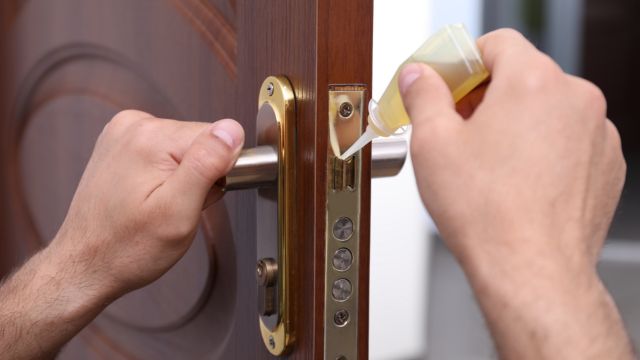
How to Lubricate Your Door Locks: Step-by-Step Guide
Now that we’ve covered the basics, it’s time to walk you through the process of lubricating your door locks. Remember, patience and accuracy are essential here.
Preparation
Before you start, make sure you have all the necessary tools and materials. This includes your chosen lubricant, a clean cloth or rag, and possibly a straw applicator (often included with the lubricant).
Applying the Lubricant
Apply the lubricant to the key and insert it into the lock, repeating the process a few times. Also, spray the lubricant directly into the keyhole.
Operate the lock several times to ensure the lubricant penetrates the internal mechanisms.
Cleaning Up
After applying the lubricant, wipe away any excess using a clean cloth or rag to prevent it from attracting dust or debris.
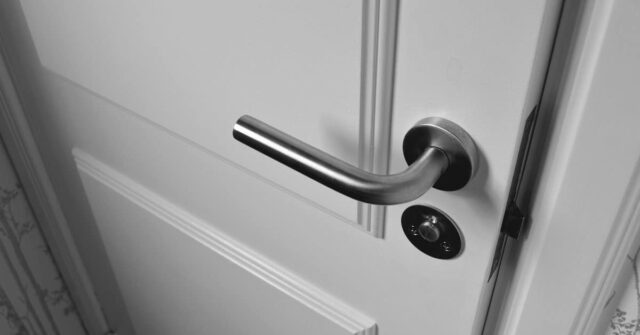
Common Mistakes to Avoid While Lubricating Your Door Locks
While lubricating your locks is a relatively simple task, there are a few common mistakes you should avoid to ensure the best results.
These include over-lubricating your lock, which can attract more dust and grime; using the wrong lubricant, and not cleaning the keyhole and key before lubrication.
How Frequently Should You Lubricate Your Door Locks?
The frequency of lock lubrication can depend on several factors including the type of lock, its usage, and the environmental conditions.
However, as a general guideline, lubricating your door locks once or twice a year should keep them operating smoothly.
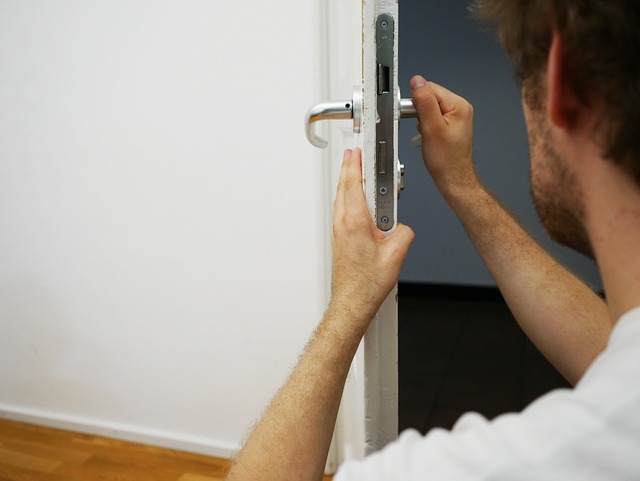
Professional Lock Maintenance Services in Australia
While DIY maintenance is crucial, there are times when you may need to seek the help of a professional locksmith. Here’s what you need to know about professional lock maintenance services in Australia.
Choosing a Locksmith
Ensure you choose a local reputable and certified locksmith who understands the specific requirements of different types of locks.
Check for reviews, ask for recommendations, and do some research before making a choice.
Benefits of Regular Professional Maintenance
Professional maintenance can help identify and address potential issues before they become severe problems.
Regular visits from a locksmith can extend the lifespan of your locks and enhance your home security.
Conclusion
Lubricating your door locks is a crucial part of home maintenance. It can extend the lifespan of your locks, ensure their smooth operation, and maintain the security of your home.
While it may seem like a minor task, regular and correct lubrication can save you from potentially significant problems in the future.


